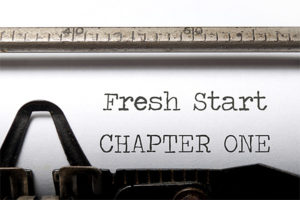Crafting the Opening Line to Start Your Story
 Once you have your premise, you can begin writing. Novels with intriguing opening lines use what is called a hook. This is a literary device that contains an unanswered question, an intriguing action or event, suggesting something troubling, unusual or suspenseful. The first page could also start in the middle of a scene. Starting in the middle is a literary device known as medias res, Latin for “into the middle of things”.
Once you have your premise, you can begin writing. Novels with intriguing opening lines use what is called a hook. This is a literary device that contains an unanswered question, an intriguing action or event, suggesting something troubling, unusual or suspenseful. The first page could also start in the middle of a scene. Starting in the middle is a literary device known as medias res, Latin for “into the middle of things”.
When you start in the middle of the action, a conversation or at a crucial point in the scene, you can still layer in the back story, the ordinary world, into the present moment, while grabbing the reader’s interest. Great opening lines can invoke surprise such as George Orwell’s Nineteen Eighty-Four:“ It was a bright cold day in April and the clocks were striking thirteen”. They can be dramatic such as in Ralph Ellison’s Invisible Man: “I am an invisible man”. Evoking emotion is always a good way to begin such as Ford Madox Ford did in The Good Soldier: “This is the saddest story I have ever heard”. The first line defines how we move into the story.
Opening Characteristics
The opening needs to set the mood, the voice, genre and introduce the protagonist, or a character with whom we identify or fear, and set up the ‘world’ of the story. The goal is to get the story moving, and start to ‘hook’ the reader to want more.
Once you have your first line, it’s time to write your first chapter which could include the inciting incident. Start a document that will become your first draft, whether in your notebook or your computer. Some people may want to continue to plot out the story and begin after that, however, many people like to begin and continue to plot as they write. Once you begin, the rule of thumb is to write at least two pages a day or five hundred words. This keeps your creative imagination engaged.
Think about a potential opening scene for what you have chosen will be your story idea. Stories are told through action, dialogue, internal monologue (the point of view character’s thoughts), and description. Action is how your characters go about getting what they want. Actions keep the story moving and can be physical or verbal (dialogue). The first part of writing successful description begins in your mind. If you want to make your story’s world feel real in the reader’s imagination, first you have to make it real in your own. A story is constructed with escalating actions that make up scenes.
Every scene should matter. There might be one or two scenes in a chapter. I find it makes sense to write a scene which might be anywhere from 1500 to 2500 words. You could also divide that in three, as scenes also have a beginning, middle and an end. Here is a guide that can help you to structure the scene(s) in your chapters in a way that will make sure they have impact and purpose.
The Anatomy of a Scene: Action and Dialogue with a Purpose
Scene #: _____
WHAT important thing is happening? (If it’s not important, cut the scene; if it’s merely there to get characters from one place to another, layer it into another scene).
- WHEN is this happening?
- WHERE is it taking place?
- WHY does this have to happen to move your story along?
- HOW does this contribute to your hero’s terrible trouble and compel the reader to always want to know what happens next?
- WHAT is the goal of the scene?
- What is the conflict in the scene?
- What secret might be revealed in this scene?
- Are you introducing a plot twist or a subplot; if so what?
- WHO is the point-of-view (POV) character and who else is involved?
Conflict is at the Heart of Story
At the heart of any scene is conflict. This conflict can be between the character and themselves, another person, society, nature, and even God. Every scene should have conflict and invoke dramatic tension which comes from what might be at stake. A scene must also advance the narrative/story in some way and deepen our understanding of the character. Once you have written this, you may want to continue writing. If so – go for it! The workbook unfolds in a way to stimulate your creativity as the story unfolds organically.
The goal is to hook your reader right from the beginning. They must be invested in the story. That is why is important to really pay attention to the first 10 pages of the first chapter in the book. With some fiction, readers feel magically transported into the story. The room where they’re sitting seems to disappear, and they enter a parallel world with characters who seem as real as the people they know. We are transmitting a mental picture when we write. This means we write in a way that putts the reader into the protagonist’s shoes.
The first part of writing successful description begins in your mind. If you want to make your story’s world feel real in the reader’s imagination, first you must make it real in your own mind. When you write to show and resist the urge to tell. The building blocks to showing are action, reaction, interior monologue or the POV character’s thoughts, description, and dialogue.
From Start to Finish
Remember once you begin, your goal is to write five hundred words a day. If you want to do more and feel you are in the flow, you know the answer, just keep going. Whatever you choose, the goal is to write every day. I like to start my day editing what I wrote the day before, then putting on my writing hat and begin that days writing. What we will see is that creative ideas have been forming in the unconscious, your partner in creating and emerge out of the concentration and focus you have been giving to it.
You can also try this exercise to begin your writing, a visualization before we write that includes willfully putting yourself in a creative state of mind and get in touch with the ability to write from the mind’s eye. This means, visualize the scene, step into the characters shoes, write what you see and experience. Have fun with it. Trust the process.

 What Is The Creative Space
What Is The Creative Space